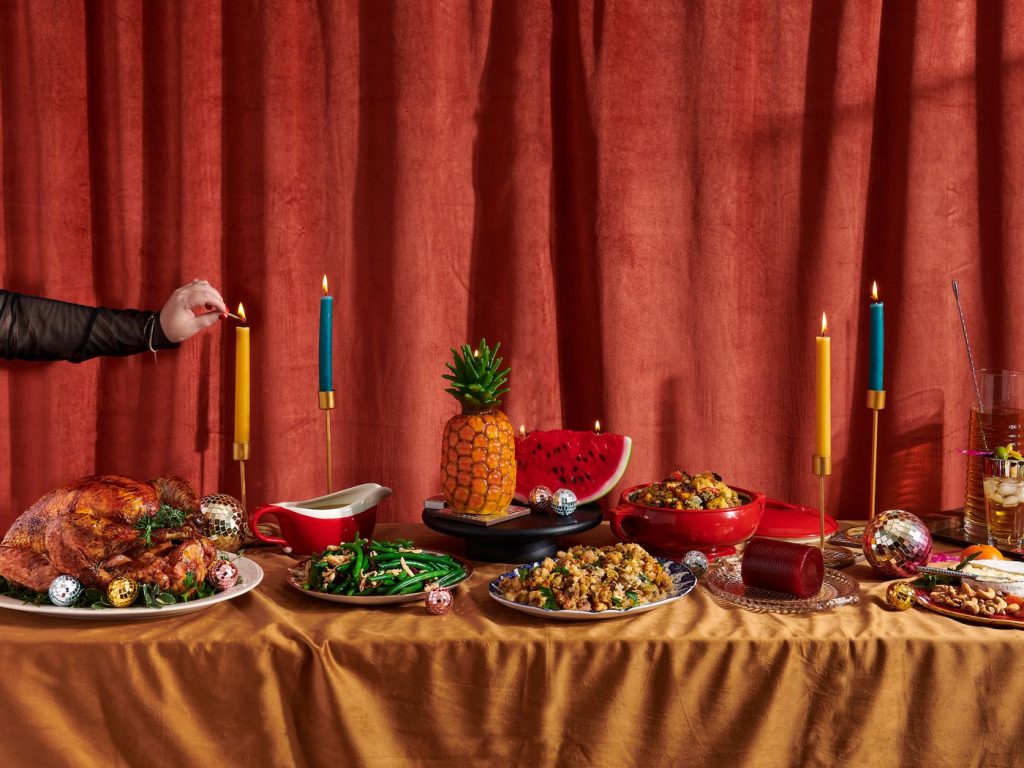The Resurgence of Tablescape: How the Pandemic Brought Back the Art of Setting the Table

In a nod to retro aesthetics, candles, crochet doilies, silver trays, and mountains of butter and croquembouche (and even tortillas de patatas) as edible sculptures are making a comeback.
The attention to detail at the dining table extends beyond the food served on the plates. By selecting specific dinnerware, tablecloths, cutlery, and other decorative elements, one can recreate a theme, a landscape. In a nod to retro aesthetics, candles, crochet doilies, silver trays, and mountains of butter and croquembouche (and even tortillas de patatas) as edible sculptures are making a comeback. The art of setting the table, more fashionable than ever, is now referred to as tablescape.
“A tablescape is a beautifully curated culinary experience, usually on a long table where food is served communally. It requires accessories, decoration, and typically a theme,” explain Charlotte Forsyth Wastell and Sofie Thompson, who design tables for events at Hands London, where companies like Ferragamo or Veja sit down to dine.
The trend, which had been simmering slowly for several years, began to boil over during the pandemic. The inability to dine out at restaurants encouraged artists, stylists, designers, and other enthusiasts of gastronomy and aesthetics to make the dining table an interesting, beautiful, and, of course, delicious place. The restaurant experience shifted to homes, where the familiarity and control of all elements helped to enhance the extravagant and baroque elements that had been sidelined in favor of the Nordic minimalism that dominated the past decade. During this time, tablecloths were removed from high-end restaurant dining rooms to enjoy (or not) the bare textures of marble, wood, or metal.
“We missed dining out in restaurants. Our response to confinement was to cook at home and turn a dinner into something sumptuous and elaborate, with decorative meals, silver cutlery, antique objects, crochet doilies, and tablecloths with a lot of drape. We always photographed those dinners, and soon people started asking us to open them to the public,” Forsyth Wastell and Thompson recount.
Julia Khan Anselmo started her project, Feisty Feast, in 2014. Her idea: to gather women at the table to explore feminist issues through food and other key topics. Khan Anselmo also argues that after the pandemic, paying attention to the details of the table has become fashionable: “we have all spent much more time at home and have even invested in dinnerware and other elements to create more special moments.” Her style, which she describes as “romantic and clean, without being too sugary,” is inspired by “the ancient world and everything that has withstood the test of time” and puts food at the center: “I don’t like to overdo it, and I try to be playful and creative with things I own; after all, food is the protagonist.”
Both the consequences of confinement and the role of social media in our lives have been responsible for this resurgence of the art of setting the table. “Eating together is a universal experience and a simple way to express the love we have for each other. Whether it’s for a couple or a friendship, we put all the care into cooking and into a thoughtful plating. We believe that Instagram has played a big role in our generation: we want everyday things, like food, to be pleasures and beauties that have received attention,” say Forstyh Wastell and Thompson.
“Setting the table with detail has become a trend from the moment the table is a central element in human interactions and very attractive and visual. Uploading all those images to social media has contributed to magnifying our interest in tablescapes,” says Monika Varšavskaja. Her background in art, design, and photography, along with her interest in gastronomy, led her to learn more about cooking to merge the visual and the culinary as the art director and cook for gastronomic experiences for cosmetic brands or fashion magazines.
Some elements stand out for being increasingly present in tablescapes. All the interviewees point out butter sculptures as a major trend, and each one indicates other ubiquitous items: for Varšavskaja, it’s candle holders made from fruits and vegetables; for Forsyth Wastell and Thompson, it’s braided bread and deviled eggs, “simple products that become beautiful and playful”; for Khan Anselmo, it’s towers and sculptures of fruits and sweet pastries, “abundance is in vogue, and we move away from the minimalism and restraint of recent years towards the decadent, over-the-top, and extravagant. It’s a fun, experimental, refreshing moment for me, where there are no rules.”


